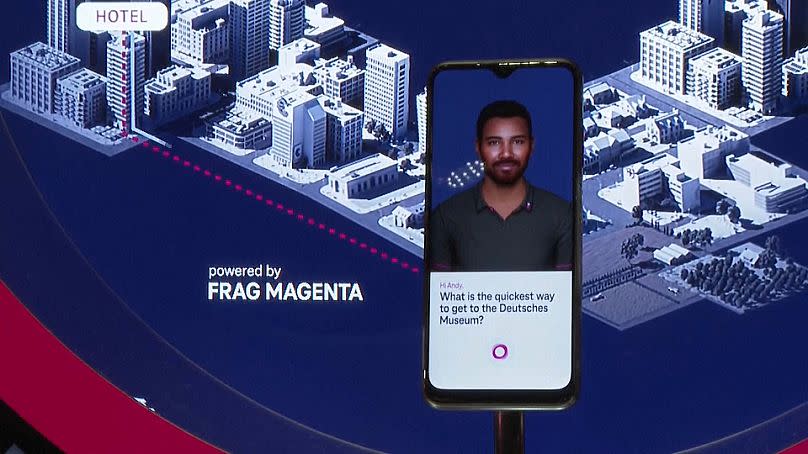MWC 2024: Here is a look at the mobile phones of the future

Wacky, innovative mobile phones were on display at this year's Mobile World Congress in Barcelona.
Motorola and Lenovo’s adaptive display concept mobile phone is flexible and can bend around a wrist. It can also be bent to stand unsupported.
"The mobile phone market is particularly challenging right now because it's dominated by two big players, Apple and Samsung. If you're a smaller player with lower volumes, you've got to find some ways to innovate and add some differentiation to your device," said Ben Wood, an analyst at CCS Insight.
"And that's one of the themes that we're seeing here at MWC from some of those players".

Unsurprisingly, there were several AI-related concept phones on display.
Deutsche Telecom's phone has conversations with the users instead of using apps.
It books them the flights and hotels they need, makes videos of their recorded memories, or gives them recommendations for places they want to visit.

Huawei, the Chinese telecoms company, secured 4 per cent of the global mobile phone market last year, but in China, it’s a different story where more than half of all handsets sold are from the brand.
So it’s brought one of its latest models to Barcelona – the Huawei Mate60 RS Ultimate Design.
Ran Sun, Huawei’s Product Portfolio Manager, demonstrates its photography capabilities, saying the cameras set it apart.
“Normally on any smartphone, the telephoto lens focuses on a certain distance, and when you go really close to an object, you won't be able to focus that much," he said.
"But with this, we put two lens groups inside a camera module, which can change their position relatively, which makes the camera capable of taking photos anywhere from five centimetres to infinity".
It’s not even on the market in Europe, so perhaps the Chinese manufacturer is testing the waters at the tech show.

The tech show is also a place where brands you’ve probably never even heard of unleash their products, aimed at a niche market.
UAE company Thuraya is launching its new Skyphone.
It comes with a tough Gorilla Glass display to withstand hard knocks and can survive under a metre of water for 10 minutes.
But it’s the satellite coverage that sets it apart – when there’s no cell phone network available, you can still make calls by connecting to satellites instead.
It even comes with an extendable antenna to boost that signal from the heavens.

"Skyphone, it's unique because it's offering an extension of a network without the hassle of going through the terrestrial network,” says Sulaiman Al Ali, CEO of Thuraya.
“So wherever you can reach the sky, you can have your connectivity," he added.
The phone will have coverage in more than 150 countries and is expected to be available in the second half of this year, and it’s not just aimed at intrepid explorers, travelling to remote destinations.
They are aiming at anyone who doesn’t want to rely on terrestrial networks.
"You are going to the sea. You are going to the desert. You are going to the mountain. So all of these adventures, wherever you go, you have that connectivity,” said Al Ali.


